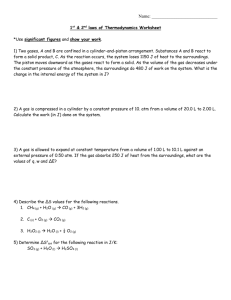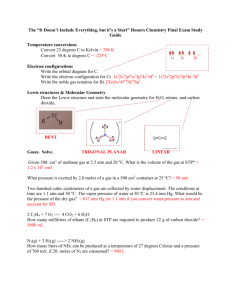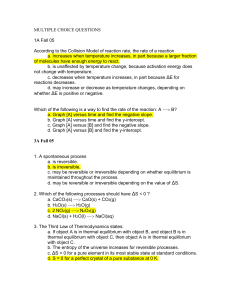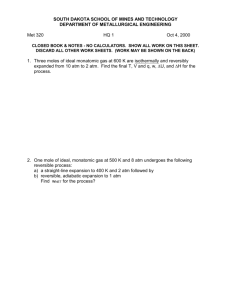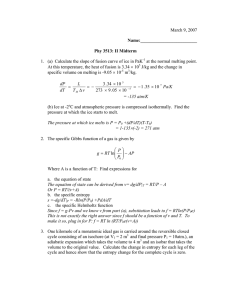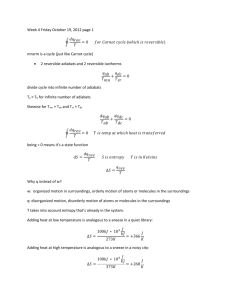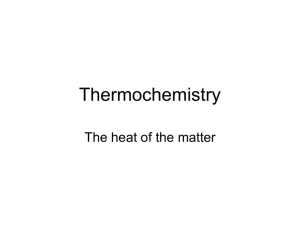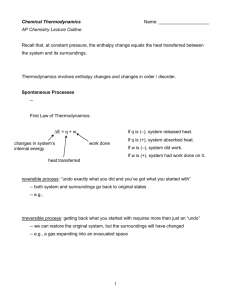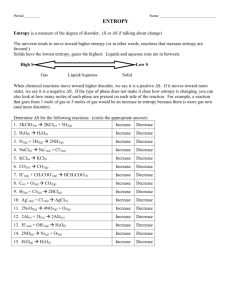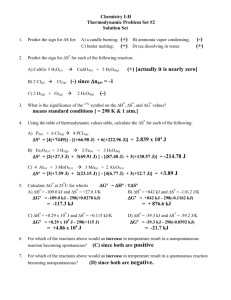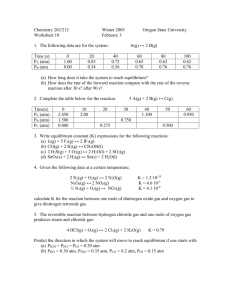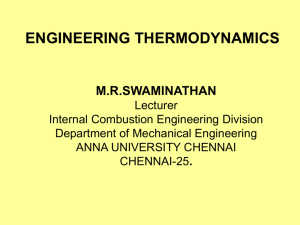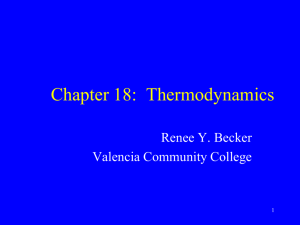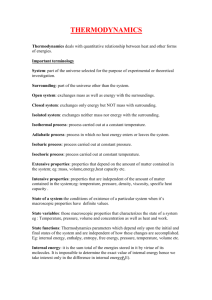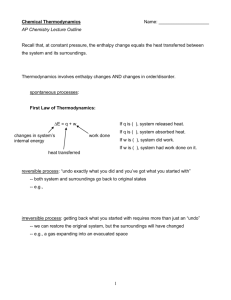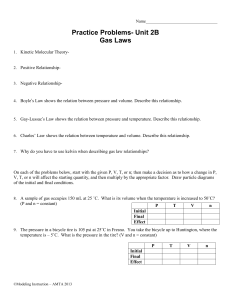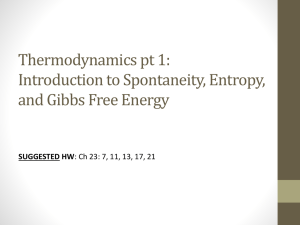Practice
advertisement
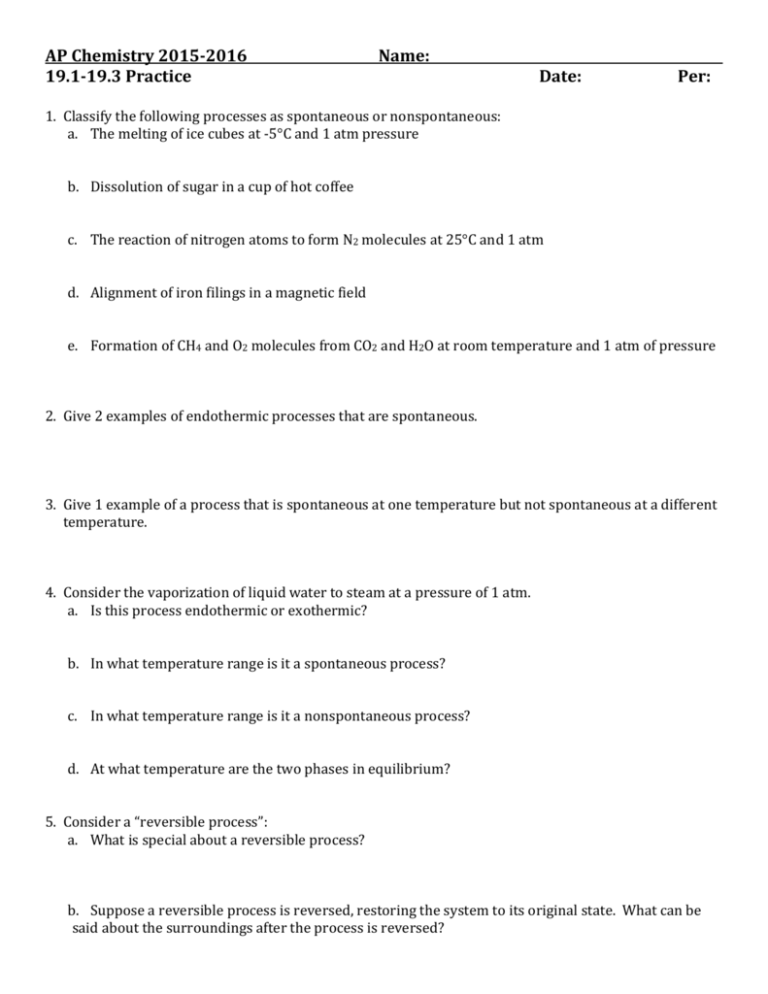
AP Chemistry 2015-2016 19.1-19.3 Practice Name: Date: Per: 1. Classify the following processes as spontaneous or nonspontaneous: a. The melting of ice cubes at -5°C and 1 atm pressure b. Dissolution of sugar in a cup of hot coffee c. The reaction of nitrogen atoms to form N2 molecules at 25°C and 1 atm d. Alignment of iron filings in a magnetic field e. Formation of CH4 and O2 molecules from CO2 and H2O at room temperature and 1 atm of pressure 2. Give 2 examples of endothermic processes that are spontaneous. 3. Give 1 example of a process that is spontaneous at one temperature but not spontaneous at a different temperature. 4. Consider the vaporization of liquid water to steam at a pressure of 1 atm. a. Is this process endothermic or exothermic? b. In what temperature range is it a spontaneous process? c. In what temperature range is it a nonspontaneous process? d. At what temperature are the two phases in equilibrium? 5. Consider a “reversible process”: a. What is special about a reversible process? b. Suppose a reversible process is reversed, restoring the system to its original state. What can be said about the surroundings after the process is reversed? c. Under what circumstances will the vaporization of water to steam be a reversible process? 6. State the following: a. 1st Law of thermodynamics = b. 2nd Law of thermodynamics = c. 3rd Law of thermodynamics = 7. You are told the entropy of a certain system is zero. What do you know about this system? 8. Distinguish between translational motion, vibrational motion, and rotational motion of a molecule. Illustrate the 3 kinds of motion with sketches for the HCl molecule. 9. For each of the following pairs, choose the substance with the higher entropy per mole at a given temperature. Explain your answers. a. Ar(l) or Ar(g) b. He(g) at 3 atm pressure or He(g) at 1.5 atm pressure c. 1 mol of Ne(g) in 15.0L of 1 mol of Ne(g) in 1.50L d. CO2(g) or CO2(s) 10. Predict the sign of the entropy change of the system for each of the following reactions. Explain your answers. a. 2SO2(g) + O2(g) 2SO3(g) b. Ba(OH)2(s) BaO(s) + H2O(g) c. CO(g) + 2H2(g) CH3OH(l) d. FeCl2(s) + H2(g) Fe(s) + 2HCl(g) 11. Use Appendix C to compare the absolute entropies of the following gaseous hydrocarbons: methane (CH4), ethane (C2H6), propane (C3H8), and butane (C4H10). What do you conclude about the trend in S° as the number of carbon atoms increases? 12. Using S° values from Appendix C, calculate ΔS° values for each of the following reactions. In each case, explain why the resulting sign for ΔS° makes sense. a. C2H4(g) + H2(g) C2H6(g) b. N2O4(g) 2NO2(g) c. Be(OH)2(s) BeO(s) + H2O(g) d. 2CH3OH(g) + 3O2(g) 2CO2(g) + 4H2O(g)
